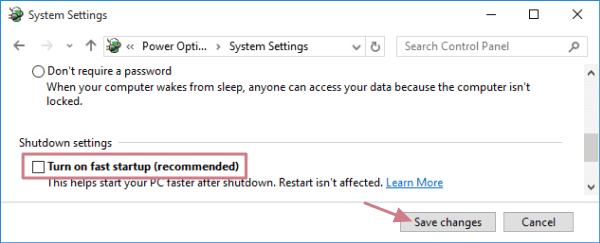

You’ll have to experiment with it to see whether your devices respond well or not. Some devices just don’t play well with hibernation.

#TURN OFF QUICKBOOT FULL#
(This doesn’t affect the full disk encryption feature of TrueCrypt, just disk images. The solution for this is just to manually dismount your encrypted drives before shutting down, but it is something to be aware of. Users of encryption programs like TrueCrypt have reported that encrypted drives they had mounted before shutting down their system were automatically remounted when starting back up. Fast Startup can interfere slightly with encrypted disk images.If a shutdown doesn’t apply your updates, a restart still will.

Restart is unaffected, though, so it still performs a full cold shutdown and restart of your system. Since applying new system updates often requires a shutdown, you may not be able to apply updates and turn your computer off.
#TURN OFF QUICKBOOT DRIVERS#
Windows then alerts device drivers that support it to prepare for hibernation, saves the current system state to the hibernation file, and turns off the computer. At this point, Windows is in a state very similar to when it’s freshly booted up: No users have logged in and started programs, but the Windows kernel is loaded and the system session is running. When you shut down your computer with Fast Startup enabled, Windows closes all applications and logs off all users, just as in a normal cold shutdown. Fast Startup combines elements of a cold shutdown and the hibernate feature.


 0 kommentar(er)
0 kommentar(er)
